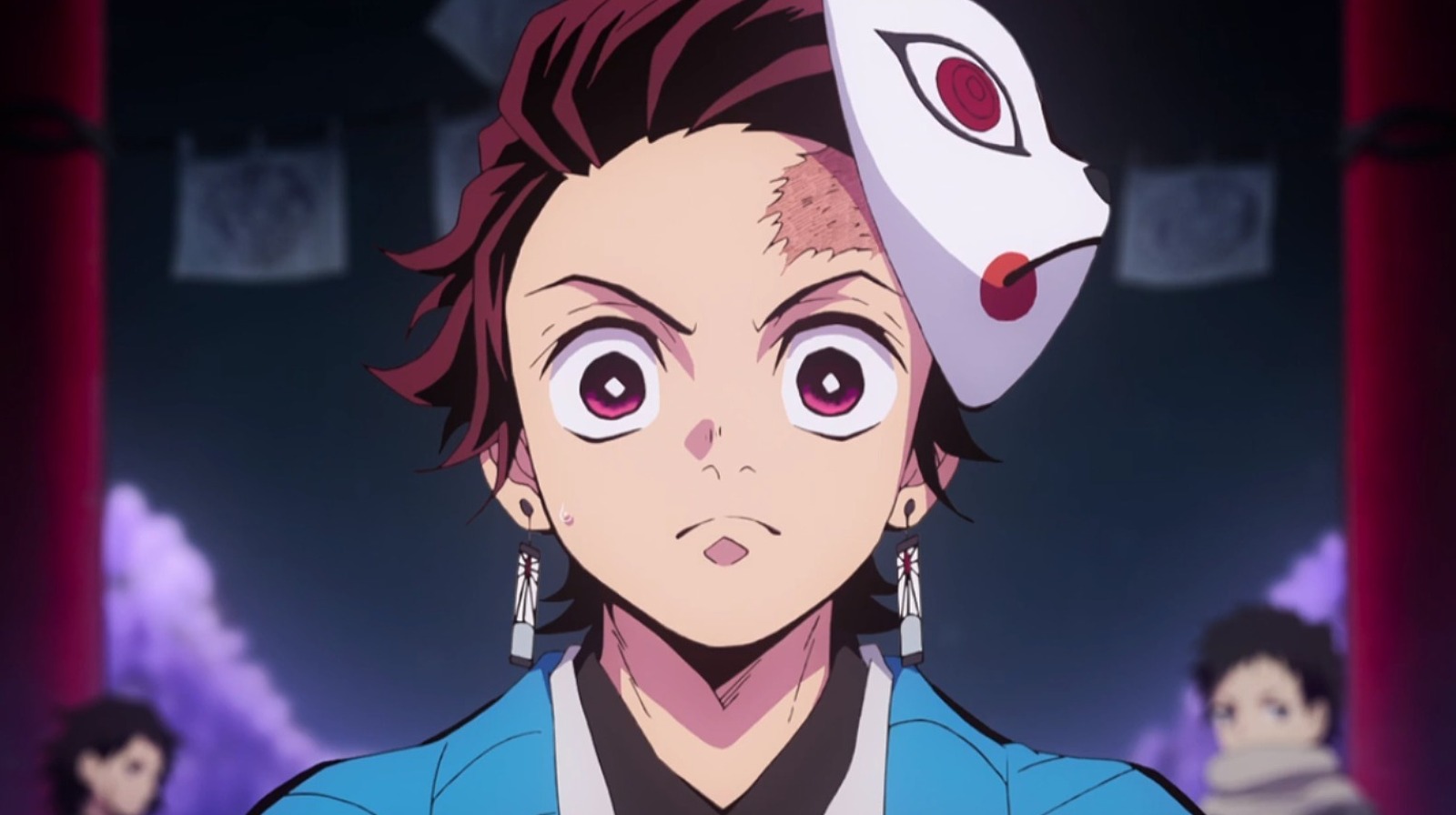In 2020, the animated motion picture Demon Slayer: Kimetsu no Yaiba the Motion picture: Mugen Prepare (Japanese: Gekijō-ban &ldquoKimetsu no Yaiba&rdquo Mugen Ressha-hen) was No. one in the planet for box office income.1 In the exact calendar year, it turned the best-grossing movie in Japanese history, surpassing Spirited Away, which experienced reigned No. 1 since 2001. Just as Miyazaki Hideo&rsquos animated common Spirited Absent has been a staple for teaching about Japanese folklore and society in school rooms all around the world, Demon Slayer is destined to realize the very same status. This is also true of the preferred Demon Slayer animated collection, readily available through on-line streaming. The authors of this post will use Demon Slayer as necessary viewing in our upcoming schooling abroad excursion to Japan titled, Pop Society Landscapes in Japan: Tokyo, Kyoto, Osaka.2 For college students participating in this application, we will offer you the religious experiments course Japanese Well-known Lifestyle: Constructions of Religious and Historical Identity and a geography study course known as Topics in Cultural Landscape Study: Popular Lifestyle Landscapes in Japan. The two of these courses are portion of the Asian studies software at our university and share comparable content to classes like Japan, a Cultural Odyssey taught at other universities.three This report explains some of the principles and themes coated in our courses applying Demon Slayer as a springboard very likely to promote university student consideration and dialogue. It is not necessary for students to observe the overall series or any unique episodes to gain from these illustrations. Visuals and clips can be shared in lessons. For our education abroad classes, we will exhibit the film, which is broadly readily available for invest in on the internet and from other retailers.
There are numerous points in the film and sequence that can be helpful in school rooms of a variety of disciplines. For example, a range of scholars have pointed out that associates of the Demon Slayer Corps dress in Taishō-period military uniforms, and there is a leitmotif of figures subsequent orders to get rid of without the need of questioning, which the most important protagonist opposes. It is uncomplicated to discover parallels with the Japanese Military through this and surrounding time intervals. Much could also be stated about the transformation of Nezuko, the main woman protagonist, into an oni (demon) in terms of granting company to abjection and setting up an different watch of the woman body for undermining rigorous gender norms in Japan. Whilst the collection is prosperous with these probable teaching products, we will target on the cultural, historical, and religious landscapes as utilized in our programs, both equally in terms of bodily geography and representations of common cultural icons these types of as yōkai.
Background and Plot of Demon Slayer 
In 2021, Gotōge Koyoharu (b. 1989), the creator of the Demon Slayer franchise, was the only Japanese human being to make Time magazine&rsquos a hundred Most Influential Men and women. This was the initial time a manga (Japanese graphic novel) artist made the listing. The franchise now incorporates manga, movie video games, a well known Tv sequence coming into its second season, a function-duration film, merchandise, and additional. In addition, she obtained the 2020 Noma Publishing Culture Award and the Newcomer Award for Fantastic Arts (Media Arts Division) for her contribution to the full publishing market thanks to the achievements of Demon Slayer.
Demon Slayer is established in the Taishō interval (1912&ndash1926), and a great deal of its mise-en-scène (plot and visible configurations) includes the cultural situation of that historical time period. To summarize the plot of the series, the primary character, Tanjiro Kamado, is the oldest son and successor to his late father, who designed and offered charcoal to support the relatives. This vocation will come to be affiliated with fire spirituality throughout the series. A single working day when Tanjiro is not house, his loved ones is murdered by a demon. The only other survivor is his young sister, Nezuko, who had been turned into a demon.
A swordsman and demon slayer named Giyū Tomioka will save Tanjiro when he is attacked by Nezuko. Giyū attempts to defeat Nezuko but realizes that the bond among the brother and sister is still robust and that the demon sister even now has emotions. In search of a way to transform his sister back again into a human, Tanjiro then goes to Sakonji Urokodaki, a &ldquotrainer&rdquo of demon slayers, and spends two many years training swordsmanship. Following that time, Tanjiro undergoes a screening take a look at and joins the Demon Slayer Corps when carrying Nezuko in a box on his again. Demon slayers have taken on the activity of hunting down demons, beating their magical abilities with martial arts competencies, therefore killing them. In the episodes that stick to, Tanjiro battles many demons, sometimes with the support of Nezuko and other demon slayers, but stays ambivalent about killing.
Looking through the Cultural Landscape
The viewing of an anime like Demon Slayer as part of an introductory geography or anthropology training course can be a important tactic in introducing the concept of a cultural landscape, the imprints that cultural methods depart on the places we inhabit. In preparation for field encounters in cultural landscape interpretation in Japan, assigning a work like Demon Slayer offers pupils the possibility to detect factors of a cultural landscape in visual form. In the anime, the creators have diligently chosen the landscape capabilities that are depicted, and the decision of these attributes and the meanings that these things convey can direct to insightful discussion into the strategies in which men and women imbue destinations with this means.
Being familiar with how the landscapes we go via and stay in reflect culture can be a impressive tool in exploring cultural ideas in geography and other disciplines. The capacity to &ldquoread&rdquo a landscape can direct to persuasive insights into how a individuals inhabit, adapt, and modify the world all over them.4 In talking about the principles of a cultural landscape with introductory geography pupils, making use of illustrations of made landscapes of that means, these kinds of as in paintings, movie, or anime, can be valuable in demonstrating how to detect and interpret cultural aspects. Demon Slayer provides various outstanding alternatives to check out how the anime&rsquos creators use the landscape alone to trace at themes inside the tale.
As described above, Demon Slayer is established for the duration of the Taishō Period in Japan, a interval of quick modify that saw the continuation of the diffusion of present day Western technological innovation and culture into the place that experienced started in the Meiji period of time. As https://demonslayer-shop.co from Japan&rsquos city facilities, these new suggestions and technologies had been normally fulfilled with resistance and reluctance to deviate from common cultural and spiritual methods.
In the initially episode of Demon Slayer, the part of the landscape portrayal in providing visible cues to the Taishō placing and even narrative themes in the anime is illustrated by Tanjiro&rsquos journey from his isolated house down the mountain to the town to offer charcoal for his family members. Both equally the Kamado family members dwelling and Tanjiro&rsquos garments are strong expressions of the traditional Japanese way of life of the rural parts of Japan for the duration of the Taishō Era, and contrast with the Western factors that combine with the common in the urban places that Tanjiro visits in the anime. The telegraph poles and lines that subtly hint at the arrival of new technologies in Japan are popular in the scene exactly where Tanjiro seems down the snow-included road in the town, even as they parallel the conventional wooden retailers and houses.
Most likely more than any other scene in Demon Slayer, Tanjiro&rsquos wander via the brightly lit nighttime city landscape of Tokyo highlights the dizzying combine of traditional Japanese and modern Western culture that was characteristic of Japanese cities in the Taishō Era (Determine 1). The crowded streets are loaded with individuals of all ages in a extensive assortment of fashions, from kimonos and haori coats to Western suits and attire. The contemporary, Western-fashion structures that line the streets, with their brightly colored classic banner indications, would be recognizable even in nowadays&rsquos Tokyo. In talking about this scene with students and contacting focus to the visible details of the streetscape, it is attainable to display how changes within a society are mirrored in the levels of the cultural landscape, as in the mixing of building and apparel variations.
In addition to the landscape clues that trace at the historical environment and greater cultural forces at work in Demon Slayer, the cultural landscapes portrayed in the anime also give visible expression to areas of Japanese religious and spiritual traditions that are mirrored in Japan&rsquos special cultural landscapes. An instance of this can be observed in the environment for the commencing of Tanjiro&rsquos trial to turn into a demon slayer. In period 1, episode 4, the mountain the place the collection demo is held, Fujikasane, is included in wisteria, and Tanjiro can make a notice of the flowers as he moves by means of this house to the prime of the stairs and into the beginning place for the trial.
Wisteria Bouquets for Restraining Oni
There is much admirer speculation on the web about why demons are restrained by wisteria flowers in the sequence. Demon Slayer features quite a few scenes and references to this, and wisterias are in bloom yr-round on Mount Fujikasane (virtually &ldquowisteria assault&rdquo) when aspiring demon slayers practice (Figure two). Lovers have instructed that demons detest the smell, that there is a poisonous ingredient in the bouquets, and that wisteria are exposed to a good deal of daylight, which is a weak issue for demons. Most likely the very best of the supporter explanations for educating about Japan as a result of Demon Slayer is that wisteria is in the legume spouse and children whose mame (&ldquobeans&rdquo) are made use of throughout the Setsubun (&ldquoseasonal division&rdquo) pageant in February to toss at oni&rsquos eyes for the reason that of a double entendre, &ldquooni eyes&rdquo (mame). This observe is also known as mame, this means &ldquodestroy demons.&rdquo The second kanji in the latter compound, indicating &ldquodestroy,&rdquo is the one discovered on the again of Tanjiro&rsquos uniform jacket.
Even though this can make a fantastic educating place about Setsubun folklore, we would like to issue to one more possibility not outlined by admirers. In common Japanese society, the title &ldquowisteria&rdquo (fuji) is affiliated with &ldquokindness,&rdquo &ldquointoxication by appreciate,&rdquo &ldquofaithfulness,&rdquo and &ldquonever leaving.&rdquo Considering that ancient times in Japan, it has been customary to plant wisteria with pine trees, in which circumstance the wisteria is as opposed to women and the pine to adult males. Wisteria flowers are reminiscent of a glamorous girl in furisode (actually &ldquoswinging sleeves&rdquo), a type of kimono distinguishable by its lengthy sleeves. It is claimed that a wisteria wrapping all over a pine tree is related with a terrifying obsession, and the moment caught, one particular will by no means be produced. For this rationale, wisteria has been recognised as kesshite hanarenai (&ldquonever leave&rdquo). Wisteria can be noticed as auspicious since it grows powerful and tall, and fuji (wisteria) is a double entendre with &ldquoimmortality&rdquo (fuji). Having said that, it is unlucky to deliver wisteria to a unwell person since yet another double entendre with fuji is &ldquoincurable disease&rdquo (fuji no yamai). The wisteria has been the topic of tanka and other Japanese poems considering the fact that ancient occasions.
Demon Slayers as Shamans
In academic analyze, the plan of what a shaman is has altered rather over the years. In his classical operates, Mircea Eliada tries to make a around the world see of shamanism focusing on ecstatic trance in hunting and gathering societies for dealing with what he sees as timeless spiritual problems about the mother nature of truth. Later scientific tests of shamanism change away from the ecstatic component, and rather, mastery more than spirits and spirit possession appear to define the part of the shaman in modern society.five While in period 1, episode 3 Tanjiro Kamado makes use of the ecstatic exercise of consider no gyō (&ldquowaterfall asceticism&rdquo) identified in each Japanese Buddhism and Shintō observe, the collection mainly has the exact same target as the later shamanism reports do: mastery about spirits and spirit possession.
Studies certain to Japanese shamanism came about rather late. These propose, as Eliada uncovered, that 1 turned a shaman possibly by heredity or by sensation a highly effective contacting, both equally followed by initiation and rigorous training by more mature shamans or spirits.6 While Tanjiro enters into intensive education by older demon slayers, his purpose appears to be neither heredity nor a calling, but a drive to convert his sister back into a human. Having said that, as the series unfolds, we study that his father experienced carried out a kagura (&ldquogod amusement&rdquo) dance to arouse or shake the hearth kami as his ancestral clan experienced finished for generations (Figure 3).
Like Tanjiro, then, researchers counsel that shamans are born to their purpose, &ldquoas is evident in particular marks distinguishing them from regular folks. For instance, a shaman could be born with a lot more bones in his system&mdashe.g., enamel or fingers&mdashthan other people today.&rdquo7 A birthmark on the facial area and elsewhere is 1 these mark in East Asian and other shamanism.8 As mentioned, Tanjiro&rsquos loved ones works with fireplace. There is a Japanese folks belief that suggests if a pregnant female stares at a fire, her child will be born with a birthmark.9 In Tanjiro&rsquos scenario, he acquired the scars on his brow from his young brother when he was young. On the other hand, we study that his father had a related birthmark or scar, and we also find that other demon slayers have very similar marks on their faces. Tanjiro&rsquos scar afterwards gets to be even far more pronounced when he is wounded in the very same location in the struggle with a demon. Scientists say it is ordinarily in adolescence when the spirits get started to show up in the lifestyle of a shaman.10 Even though Tanjiro&rsquos exact age is unclear, the creator reveals in an interview that he is thirteen several years outdated at the commencing of the tale and ages to fifteen as the adventures unfold.eleven
Research on Japanese shamanism have focused primarily on woman spiritualists, getting that there are two most important types: jinja miko or kannagi (individuals joined to a Shintō shrine), who perform a part in kagura and yudate (drinking water purification) of worshippers and kichiyoshi miko (wandering shamanic practitioners), who act as intermediaries amongst kami and folks. We can issue out in class that both traditionally and to the existing working day, there are also wandering shaman-like practitioners in Shugendō who are largely male. Shugendō mixes Shintō, Buddhist, and Daoist religious procedures to bring about equilibrium and harmony in persons and culture.
Possibly the most very well-recognised and usually-cited scholar of Japanese shamanism and folklore right after WWII is Hori Ichirō (1910&ndash1974), who concentrated on the social function of shamans, particularly in relationship with the event of irregular social activities. Hori describes the part of Japanese shamans in conditions of producing ajasutomento (&ldquoadjustments&rdquo) in modern society to distinct historic disorders of anomi (anomy), that is, social instability and nervousness, reduction of social values, or collapse of the social constructions. This matches the character of Tanjiro in Demon Slayer, operating under such situations in the Taishō period as outlined earlier mentioned. In this way, the shaman is a mediator in significantly tricky own and social conditions.twelve
Kami, Oni, Yōkai, and Demon Slayers
Historically and in the course of the ages, Japanese persons have conceived and represented supernatural forces in numerous anthropomorphic, animalistic, and geographical varieties. When speaking about these kinds of concepts in introductory religious research courses, it is generally beneficial to glance at how supernatural entities are represented in literature and other media. For instance, kami are the subject matter of veneration and awe in Shintō. In Japanese, the word &ldquokami&rdquo can commonly denote &ldquogods,&rdquo like these of ancient Greece, or &ldquoGod,&rdquo as in monotheistic religions. Nonetheless, as made use of in Shintō, the this means of &ldquokami&rdquo refers to a unique Japanese conceptualization that is unique from either polytheistic or animistic notions. Right now, most Shintō kami do not dominate or intimidate individuals, but this was not generally the case. In the previous, rituals have been done to placate their anger. Historically, Japanese have prayed at a kami&rsquos shrine in hopes that the kami will grant needs or manage very good temperature and other circumstances.
There is a declaring in Shintō that there are &ldquoeight million kami.&rdquo This quantity is not to be taken actually, but denotes that they are everywhere you go. That becoming the circumstance, are oni (demons), which is the phrase used in Demon Slayer, and yōkai (ghosts and monsters) kami? This is not an quick concern to remedy, but in course we can describe modifications in Japanese beliefs about religious entities more than time as abide by and relate to Demon Slayer.
The Paleolithic period, prior to fourteen,000 BCE, has been called &ldquothe age of the kami.&rdquo According to the two main foundational operates for Shintō&mdashthe Kojiki and Nihon Shoki&mdashthis is when Amaterasu&rsquos grandson, Ninigi, and Ninigi&rsquos great-grandson, Jimmu, legendary initial emperor of Japan, were energetic on earth. Primarily based on excavations, the Jōmon period (fourteen,000&ndash300 BCE) was a time of searching and collecting when there was belief in animism, and the non secular great importance of natural features was frequent. For the duration of the Yayoi period (three hundred BCE&ndash300 CE), moist rice agriculture was launched to Japan. Archeologists have dated mirrors, swords, and magatama jewels to this time and consider the shaman queen Himiko was the leader of an place called Yamatai (ca. one hundred ninety). Ise Shrine, which houses the Solar Kami Amaterasu, was started in the fourth century BCE, according to the Nihon Shoki. In this interval, the taboo on dying started, and there was a non secular worth put on rice. In the course of the Kofun and Asuka periods (300&ndash710 CE), tomb mounds had been built for leaders. Several of these mounds are keyhole-shaped, though the significance of this is unclear. Throughout this time, Buddhism was formally launched to Japan. The Kojiki (712) and the Nihon Shoki (720) were being published in the course of the Nara time period (710&ndash794 CE). With the distribute of Buddhism, Shintō shrines were being developed in imitation of temple design, and quickly, photos of kami were being established in the sort of Buddhist paintings and statues. Festivals also transformed to incorporate chanting in a identical way to the reading of Buddhist sūtras.
For the duration of the Heian interval (794&ndash1185 CE), kami were matched to their so-termed &ldquooriginal forms&rdquo as buddhas and bodhisattvas. Buddhist clergymen were also billed with the endeavor of manipulating normal forces and engaged in a non secular version of rainmaking. In the Kamakura and Muromachi periods (1185&ndash1573 CE), Shugendō mountain asceticism turned well known in the Kumano Mountains, and ascetics traveled to villages, doing rituals for purification for evil influences, very similar in that way to the Demon Slayer Corps.
In the course of the Tokugawa time period, also identified as the Edo period of time (1603&ndash1867 CE,) men and women discovered new careers in towns, away from sites the place traditional rural kami have been enshrined. In towns, they sought kami of good luck to enable them in their new endeavors. Below these circumstances, several kami, which includes the Inari fox spirits, quickly became well known between folks praying for revenue and asking for other particular wishes to arrive real. Scrolls ended up built describing and depicting yōkai-like tsuchigumo, the spider yōkai that appears in Demon Slayer. These photographs began to turn into common and possible aided men and women experience additional at relieve with their cartoonish figures. The afraid demon slayer Zenitsu in the series claims the older girl living in the wisteria crest dwelling is a yōkai, and there are numerous overt and refined references to them in Demon Slayer. The Edo period is also when Kyokutei Bakin (1767&ndash1848) wrote the popular 106-volume Nansō Satomi Hakkenden (The Legend of the Eight Samurai Hounds) that Tanjiro mentions at the close of season one, episode thirteen. It&rsquos exciting to notice that in that epic, every of the eight samurai hounds has a bruise somewhere on his system like Tanjiro and some other members of the Demon Slayer Corps. A person of the most obvious adaptations and extended therapies of yōkai in the sequence is of the Spider Family come across that spans a few episodes.
The Spider Household and Scary Creatures Earlier and Existing
Probably the most strange and downright stunning scene in the full Kojiki and Shoku Nihongi, which is loaded with them, is the fight amongst the Yamato imperial forces and the Tsuchigumo, or Earth Spiders. The Tsuchigumo are indigenous people of Japan, and as Michael Dylan Foster factors out, they along with other yōkai are frequently primarily based on marginalized people today. As the imperial army treks across Honshu &ldquoconquering&rdquo different localities to claim as their have, these types of encounters seem to modern audience as strategies of ethnic cleansing accompanied by slurs. Furthermore, when the woman creator kami Izanami is dying, vomit and excrement become non-Yamato ethnic people of Japan. When the army encounters the Tsuchigumo, which have humanlike heads and spiderlike bodies, they smash them with &ldquohammer swords.&rdquo Historic Tsuchigumo depictions can be uncovered in Foster&rsquos e-book and on the web. These can be practical for comparisons with associates of the spider family members in Demon Slayer (Figure four). We would like to take note, even so, that as in other spots in the collection, the creator Gotōge reworks the before mythology for modern-day instances, generating the spider loved ones victims to be pitied even in becoming forced into a horrific condition. While Tanjiro continuously presses this point, other customers of the Demon Slayer Corps refuse to acknowledge any thinking that is not formally sanctioned by the institution.




